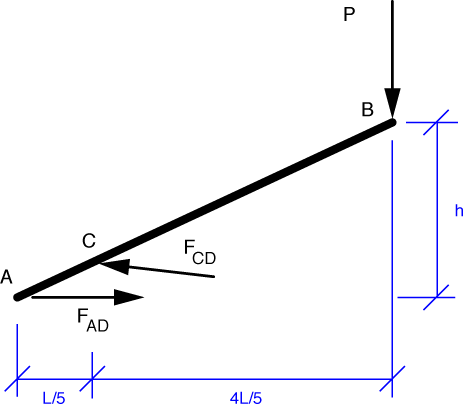Den Hartog’s Mechanics
A web-based solutions manual for statics and dynamics
Problem 40
Now here is a problem that puts us firmly in postwar America. Note the long, careful description of an everyday—but still somewhat novel—item for “us moderns.” I remember aluminum ice cube trays from their last years in the 60s and early 70s, but by then the mechanism was, I think, somewhat different. Nowadays, you may find an ice cube tray like this at a flea market or antique store, next to the old issues of Life magazine.
Enough nostalgia. We’re to find the tension is segment AD, which we’ll call F_{AD}. Because there are pins at either end and no applied forces between the pins, AD is a two-force member. So is CD. We’ll use these facts to draw the free-body diagram for ACB.

Taking moments about C, we get this equilibrium equation:
(We know the vertical distance from A to C is h/5 from similar triangles.) The solution is
which matches the solution in the book. Long description for a short problem.
Last modified: January 22, 2009 at 8:32 PM.

